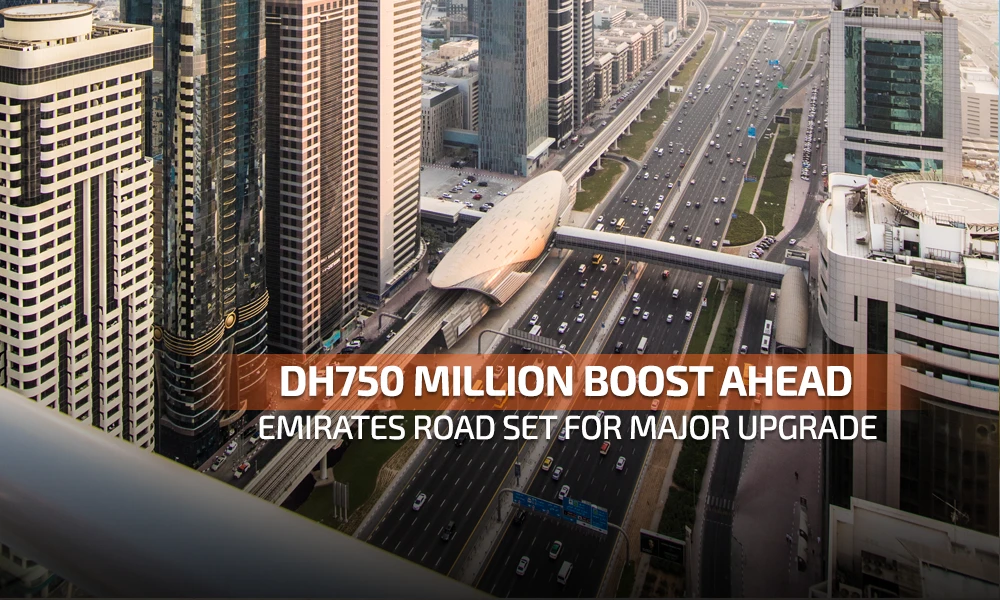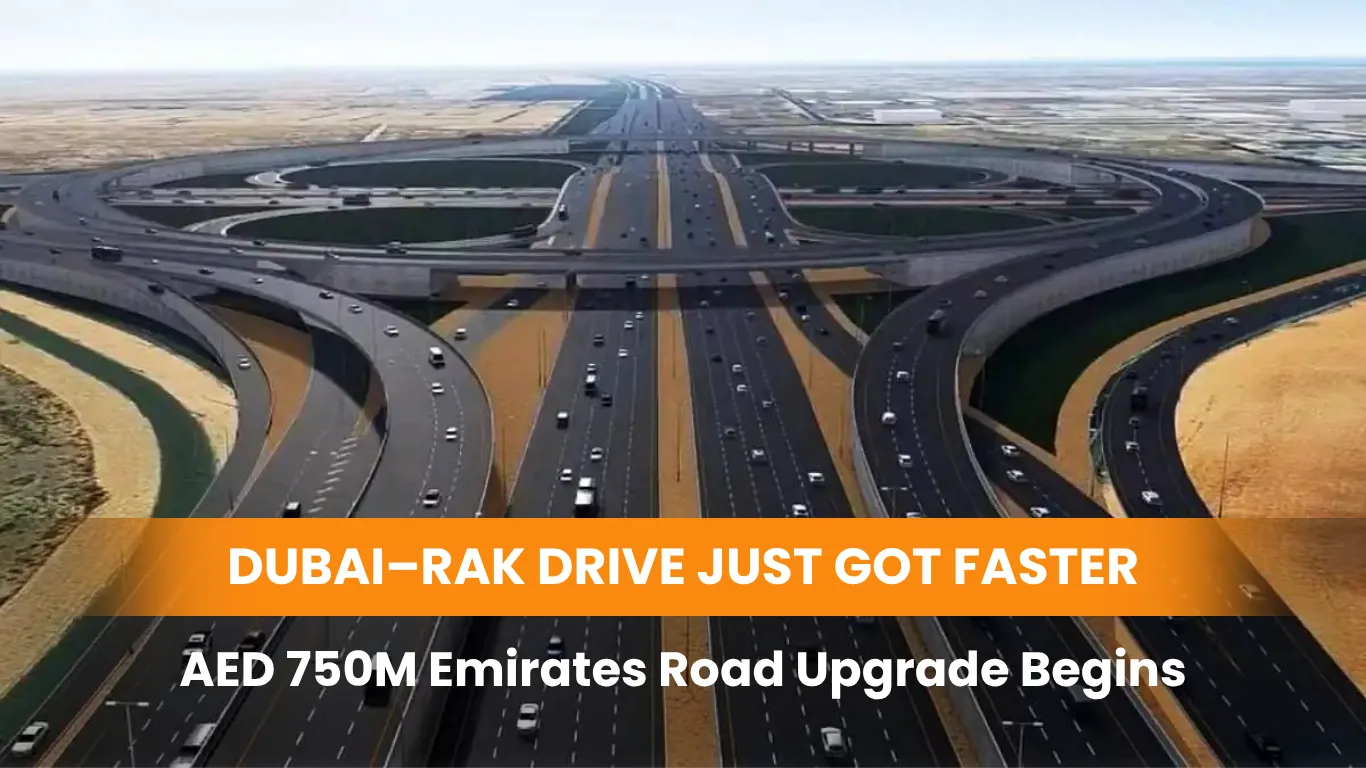Introduction: A Bold Step Towards Smoother, Smarter, and Safer Travel in the UAE
The UAE continues to set benchmarks in infrastructure excellence, and the latest announcement is yet another testament to that vision. The UAE Emirates Road—one of the country’s most vital transport corridors—is set for a massive transformation with a Dh750 million enhancement project aimed at eliminating congestion, improving traffic capacity, and supporting economic growth.
Let’s explore what this ambitious upgrade means for daily commuters, transport businesses, and the nation’s infrastructure future.
Emirates Road: The Pulse of Inter-Emirate Connectivity
Emirates Road, also known as E611, is a major federal highway connecting the northern and southern Emirates. Running parallel to Sheikh Zayed Road and Sheikh Mohammed bin Zayed Road, it plays a crucial role in easing pressure on inner-city roads and facilitating smoother inter-emirate travel.
Spanning from Abu Dhabi to Ras Al Khaimah, Emirates Road is the backbone of logistics, trade, and everyday commuting for thousands of residents. Whether it’s cargo trucks moving between ports or families commuting from Sharjah to Dubai, this road is always on the move.

The Dh750 Million Transformation: What’s in Store?
Major Highlights of the Project
As announced by the UAE’s Ministry of Energy and Infrastructure, this Dh750 million enhancement plan will dramatically reshape a key stretch of the UAE Emirates Road, specifically between Al Badee Interchange in Sharjah and the Al Turrfa Intersection in Umm Al Quwain.
According to Khaleej Times, Gulf News, and The National, the project includes:
- Widening the road from 3 lanes to 5 lanes in each direction
- Increasing traffic capacity from 4,200 to 9,000 vehicles per hour
- Construction of six new bridges totaling 12.6 km to improve the Interchange No. 7
- Additional 3.4 km collector roads on both sides for better local connectivity
- 70 km of new lanes in total to enhance traffic movement and safety
Also Read: UAE’s Dh750-million Emirates Road project to ease traffic, cut travel time
UAE’s Emirates Road to undergo Dh750 million enhancement
Timelines and Implementation Strategy
Work on the project is set to commence in September 2025 and is expected to be completed within two years. The project will be executed in phases to ensure minimal disruption to daily commuters using the Emirates Road.
The plan prioritizes high engineering standards, road safety, and minimal environmental impact. Upon completion, the UAE Emirates Road will be one of the most modern and efficient highways in the region.
Benefits for Commuters: From Traffic Woes to Smooth Commutes
For daily travelers between Sharjah, Umm Al Quwain, and Dubai, this upgrade couldn’t come at a better time.
What Can You Expect?
- Reduced Travel Time: Up to 45% decrease in commuting time
- Eased Congestion: With wider lanes and improved interchanges, bottlenecks will become history
- Enhanced Road Safety: New lanes and bridges will ensure safer and more structured traffic flow
- More Comfortable Journeys: Less stop-and-go, more cruising
For residents and businesses along the route, the Emirates Road will soon deliver not just speed, but safety and sustainability.
Economic Ripple Effects: Beyond Just a Road
Infrastructure doesn’t just build roads—it builds futures.
Upgrading the UAE Emirates Road has a wide range of economic benefits:
- Boosts logistics and supply chain efficiency, especially for northern Emirates
- Supports real estate and commercial development along and beyond the corridor
- Reduces fuel consumption and vehicle wear, thanks to improved traffic flow
- Lowers CO₂ emissions, contributing to national sustainability goals
As Suhail bin Mohammed Al Mazrouei, Minister of Energy and Infrastructure, stated:
“This project is part of our efforts to enhance the quality of life for residents, support sustainable development, and elevate the efficiency of the country’s road network.”
Interchange 7: The Smart Traffic Solution
One of the most critical parts of this project is the redevelopment of Interchange No. 7, a major junction on the Emirates Road.
This will feature:
- Six smart bridges to manage high volumes of cross-traffic
- Capacity to handle 13,200 vehicles per hour
- Intelligent routing and separation of through and turning traffic
This engineering marvel will become a flagship of modern mobility in the UAE Emirates Road network.
Environmental and Urban Impact
It’s not just about faster driving—it’s about greener, smarter development.
- Decreased congestion = reduced emissions
- Improved traffic flow = less fuel wastage
- Advanced planning = better integration with urban expansion plans in Sharjah and Umm Al Quwain
This aligns with the UAE’s sustainability vision and Net Zero 2050 targets, making Emirates Road not just a highway—but a climate-conscious corridor of the future.
Quality of Life: What Residents Are Saying
Early feedback from commuters has been enthusiastic.
Motorists have praised the government’s focus on long-term infrastructure, saying the enhanced Emirates Road will:
- Cut their daily stress
- Reduce vehicle maintenance
- Offer safer travel, especially during peak hours
As one Sharjah-to-Dubai commuter put it:
“It feels like the government is finally giving this road the attention it deserves. I can’t wait for smoother drives and shorter mornings.”
How Emirates Road Fits Into the Bigger Picture
This project is part of a broader national infrastructure roadmap that includes:
- Dubai’s Dh633 million Financial District mobility plan
- Ras Al Khaimah coastal development connectivity
- Sharjah freight road expansion
Together, they contribute to a stronger, smarter UAE transport network where Emirates Road plays a starring role.
Also Read : Etihad Rail Project: Sharjah Roads Closed for 2 Months
FAQs – Emirates Road Upgrade Project
1. What is the Emirates Road upgrade project about?
It’s a Dh750 million infrastructure initiative to expand and modernize Emirates Road (E611) between Sharjah and Umm Al Quwain.
2. Why is this project important?
It will reduce traffic congestion, improve road safety, and enhance daily commutes across northern Emirates.
3. What changes will be made to Emirates Road?
The road will be widened from 3 to 5 lanes in each direction, with new bridges, collector roads, and interchanges.
4. Which areas are affected by the upgrade?
The 25-km stretch between Al Badee Interchange (Sharjah) and Al Turrfa Intersection (Umm Al Quwain) will be enhanced.
5. When will the construction begin and end?
Construction starts in September 2025 and is expected to take two years to complete.
6. How will it improve traffic flow?
The road’s vehicle capacity will increase to 9,000 vehicles per hour, reducing travel time by up to 45%.
7. Will there be traffic disruptions during construction?
Minor temporary detours may occur, but work will be phased to minimize commuter impact.
8. How does this project support sustainability?
Less congestion means reduced emissions, better fuel efficiency, and greener travel across the UAE.
9. What is the role of Interchange 7 in the plan?
It will feature six bridges handling 13,200 vehicles/hour, easing major junction congestion.
10. Who is leading the project?
The UAE Ministry of Energy and Infrastructure is managing the project with high engineering standards.
Final Thoughts: A Road to the Future
The Dh750 million enhancement of the UAE Emirates Road is not just a transport upgrade—it’s a national milestone.
It’s about:
- Supporting the UAE’s smart mobility goals
- Improving daily lives for thousands of residents
- Laying the groundwork for future development
By 2027, the Emirates Road will be faster, safer, greener—and ready to carry the UAE into the next generation of infrastructure excellence.







